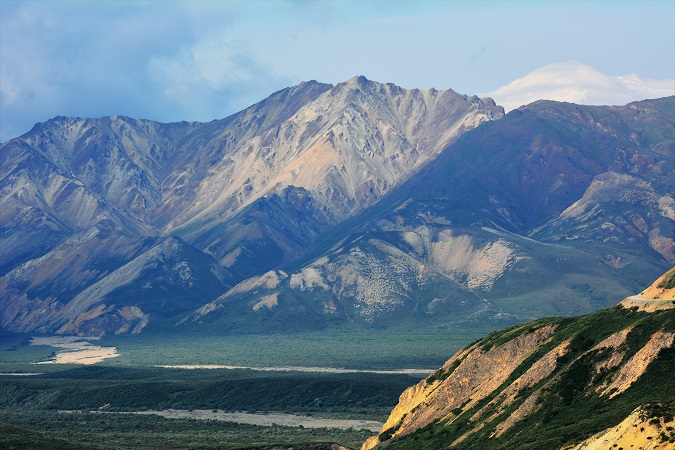
Updated 29 Jan 2023.
Denali National Park
Plan your visit to Denali – the vast Alaskan wilderness park. Denali National Park was created in 1917, but there was no road access until 1957. Previous to that date, visitors arrived by train.
The park consists of six million acres (24,000 km2). There are plenty of places to go and things to see for both the adventurous and the not-so-adventurous.
Getting There
Denali National Park is located about 240 miles (386.24 km) north of Anchorage and 120 miles (193.1 km) south of Fairbanks. It is 12 miles (19.31 km) south of Healy, which is the nearest year-round community.
Alaska’s state-owned railroad connects Anchorage to Fairbanks and stops at the entrance to Denali (for more information, visit Alaska Railroad).
Accommodation
Accommodation (hotels and camping) is available in the little community of McKinley Park, just one mile north of the park entrance. There is also camping inside the park.
The Park Road
The Denali Park Road stretches 92 miles (148 km) into the wilderness of the park. Only the first 15 miles to Savage River are open to private vehicles.
Park Busses
A large fleet of buses that run from mid-May to mid-September services Denali Park Road. A reservation is not always needed, but it would be a good idea to ensure a seat.
The bus will take you across Denali National Park through mountains, valleys and plains. There is a good chance of seeing Grizzly bears and other wildlife from the bus, as well as beautiful scenery everywhere you look. You can get off the bus at any point except at a place where wildlife is sighted. I recommend getting off somewhere along the route and walking for a while to enjoy this majestic site thoroughly. You can get back on any bus that comes along – just wave, and it will stop. As you see in the photo, there is a bicycle rack on the front of the bus, so you can take the bus one way and bike back if you wish.
There are two types of buses. The first, described above, are merely for transportation. You may get on and off at any point. The other kind is a narrated tour bus for people who just want to tour Denali and receive lots of information about the park and wildlife as they go. These buses are more expensive than the regular buses. They are tan in colour, so it is easy to distinguish them from the ordinary buses, which are green. The tour buses do not stop to pick up people along the road, as the green buses do.
Visitor’s Centers
There are two Visitor Centers. One near the entrance and the Eielson Visitor Center at mile 66 (open in summer months only). The Visitor’s Center should be your first stop to get more information about the park and the buses.
Camping in the Park
There are four campgrounds within the park for backpackers. Dedicated buses go to these campgrounds that only campers can use.
The Teklanika River Campground can accommodate vehicles with small camping trailers. (Trailers or RVs must not exceed 40 feet (12.2 metres) in length and cannot pull another automobile behind. Second cars must remain at the park entrance where free parking is available.) There is a minimum three-night stay. Campers may drive to and from their campsite but cannot drive around the park during their stay. (The three-night minimum does not apply to tent campers without a vehicle.)
Wildlife
Arctic Ground Squirrels can be seen in many places along the road.
Moose – anywhere along the road from Park HQ to mile 7 to Savage River Bridge
Moose – Savage Campground, Hogan’s Creek, Teklanika Flats and Igloo Forest
Caribou – from mile 11 to Wonder Lake
Dall Sheep – at Polychrome in Spring, in summer high up on mountains
Grizzly – anywhere along the road, you will probably see at least one from the bus. Many Grizzlies in Denali are much lighter than those seen along the coast and other places in the interior. I photographed this very light bear from the bus.
Marmots – Polychrome Pass
Pikas – Polychrome Pass
Fox – anywhere but especially Stony Creek and Savage River Campground and Eielson Visitor’s Center
Willow Ptarmigan – along the road in spring or later from mile 7 to 15.
Rock Ptarmigan – from Stony Point to Eielson Visitor Centre
Mt Denali
Denali, formerly known as Mt McKinley, at 20,156 feet (6,144 metres), is the tallest mountain in North America. Unfortunately, Mt Denali is often shrouded in low clouds and sometimes is not visible for days at a time. If there is a nice view of the mountain when you are there, you may wish to get off the bus for some good photos.
Hiking
There are a few hiking trails in Denali National Park, and most of those are near the park entrance. There are short hiking trails at Eielson Visitor’s Center and Wonder Lake.
However, off-trail hiking is allowed in most of the park. With an area the size of Massachusetts, there is no lack of places to go. Before you attempt this type of hiking and backpacking, check in at the Visitor’s Center for information and to let them know where you are going and when you expect to be back. There is a marvellous experience to be had but it is not for beginners. You should have some previous practice with your equipment before you attempt back-country hiking.
There are also short ranger-led interpretive hikes for people who want to learn more about the park and its flora and fauna. These hikes start at the Visitor’s Centers.
Flightseeing
If you can afford it and if the weather is good, flightseeing tours are available. This is the only way to see most of the vast park. Make sure you go on a day when the weather is clear for a nice view of Mt Denali. Ask at the Visitor’s Centre because even though it may seem like a nice day, the mountain could be hidden in low clouds and not visible on your tour.
Birding
Denali National Park is also great for birders. About 160 species have been seen in the park. While walking along the park road, we were lucky to observe Greater White-fronted Geese with goslings.
Conclusion
No matter if you want to go hiking, biking, camping or just ride the bus, if you love nature as I do, I highly recommend a tour of Denali National Park.
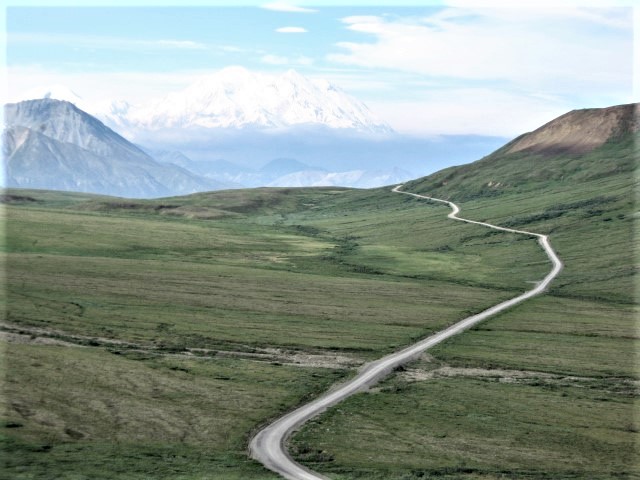
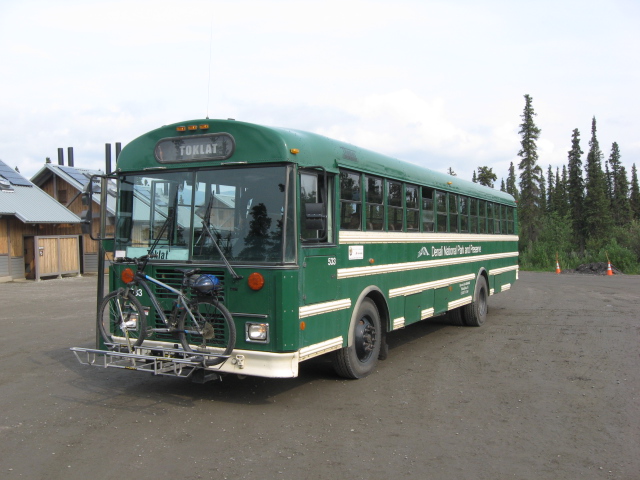

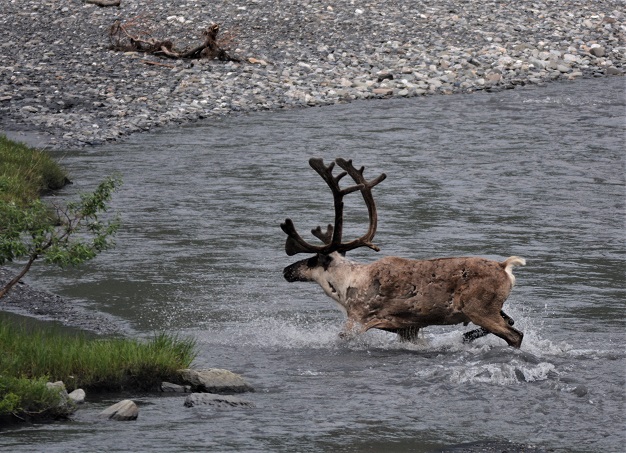
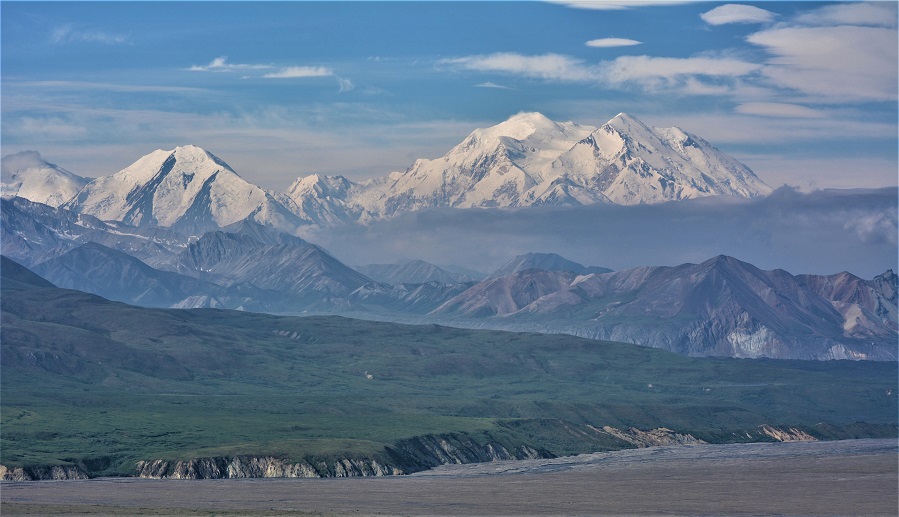
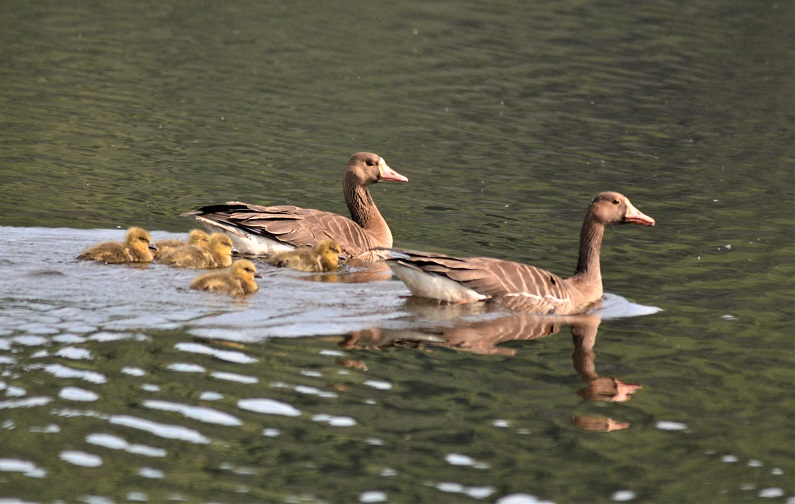
This visit is a must.